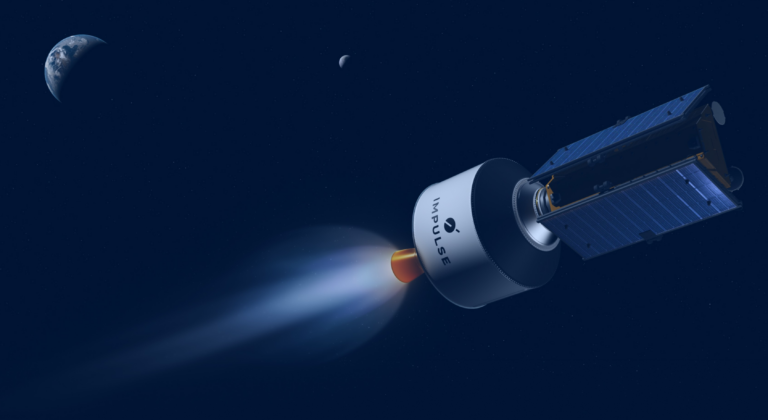When companies and government organizations want to deploy satellites and other objects into space, they usually go to Low Earth Orbit (LEO), and they have only a few options. That is about to change. Impulse Space is developing a space transport vehicle that promises to reduce the time to take objects to orbits above LEO from months to just hours.

Impulse Space CEO Designed Space X Engine
Impulse Space, based in Redondo Beach, California, is focused on providing space transport, or space-tug capabilities, for satellites and other payloads. With its Helios spacecraft, Impulse plans to develop a fleet of transportation vehicles. The CEO and founder of Impulse is Tom Mueller, a founding member of Space X and chief designer of the Merlin engine. New versions of the Merlin now power Space X’s Falcon 9 Rocket and Falcon Heavy launcher.
Mueller plans for the Helios to extend the capabilities of rockets from Space X and other companies, carrying objects to orbits higher than LEO. These could be heliocentric, lunar, and other planetary orbits.
“Space X really got the party started by opening up access to LEO,” said Mueller. “What Impulse wants to do is what Space X did for LEO, but for everything else, all the other high-energy orbits.”

Helios to Launch on Space X Falcon 9 Rocket
A typical mission profile could be for a Falcon 9 to first launch a Helios space transport vehicle into LEO. From there, the Helios would take its payload up to Geostationary Orbit (GEO) or higher. For comparison, LEO is anything below 1240 miles and GEO is much higher, at about 22,000 miles above Earth.
Helios will be able to transport objects weighing as much as 11000 pounds. Its engine, the “Deneb”, will produce 5,000 pounds thrust and use up to 14 tons of liquid oxygen and methane for fuel. Helios will be almost like a third stage for the Falcon-9.

The goal is for the Helios to “max out the lift capability of a single stick Falcon 9,” said Mueller.
Impulse is also developing the Helios to be able to launch on other platforms besides the Space X rockets.
“Any medium-sized vehicle that could carry this would greatly improve its performance,” said Mueller. “Even on a vehicle that has awesome performance like Vulcan [United Launch Alliance], this will increase its capabilities.”
Helios to Reach Orbits Above LEO in Hours Instead of Months
One of the main advantages Helios will provide is time savings. It might currently take several months for a space transport, using electrical propulsion, to deliver a payload above LEO. Impulse has designed Helios to do it in less than 24 hours.
“This changes the mission value proposition significantly in several ways, including decreasing the time to reach operational status, limiting potential radiation exposure, and reducing the overall payload mass by decreasing the size of thrusters and amount of fuel required,” said Martin Halliwell, former CTO of SES Satellites.
Both Large and Small Payloads to Deploy on Helios
Impulse designed Helios to be a solution for transporting large GEO satellites, but now the company wants it to carry additional payloads. For this, the company wants to use Helios to fly shared missions with spacecraft smaller than one ton. These could be micro-Geo, or mini-communication satellites.

There are not many opportunities for companies to launch these smaller satellites alongside larger payloads, and Impulse wants to fill this need for potential customers. The company plans to buy its own launch vehicle, most likely a Falcon 9, and sell slots for transport to orbits above LEO.
Impulse plans to continue testing Helios this year and begin regular service in 2026. They have contracted with Space X for three Falcon 9 rocket launches for their first missions.

Helios First Missions Will Support DoD
Impulse is already attracting customers, and its first payload will be a DoD spacecraft. The U.S. Space Force is interested because it wants to be able to deploy satellites tactically, or quickly, and Helios will give it that capability. The first flight will be to support the DoD VICTUS SURGO mission, deploying an optical payload.
For this mission, Helios will carry the Impulse Mira spacecraft. This smaller transport vehicle can maneuver and deliver objects within an orbit. Helios will carry Mira from LEO to Geosynchronous Transfer Orbit (GTO). The Mira then will carry and deploy the DoD spacecraft.
“Helios’ ability to open access to high-energy orbits like GEO, with availability when needed or requested, is not only a valuable commercial service but can also help enable a strong national defense posture in space,” said Mueller.
Impulse is also hoping to serve customers involved in communications, imaging, and scientific research.




